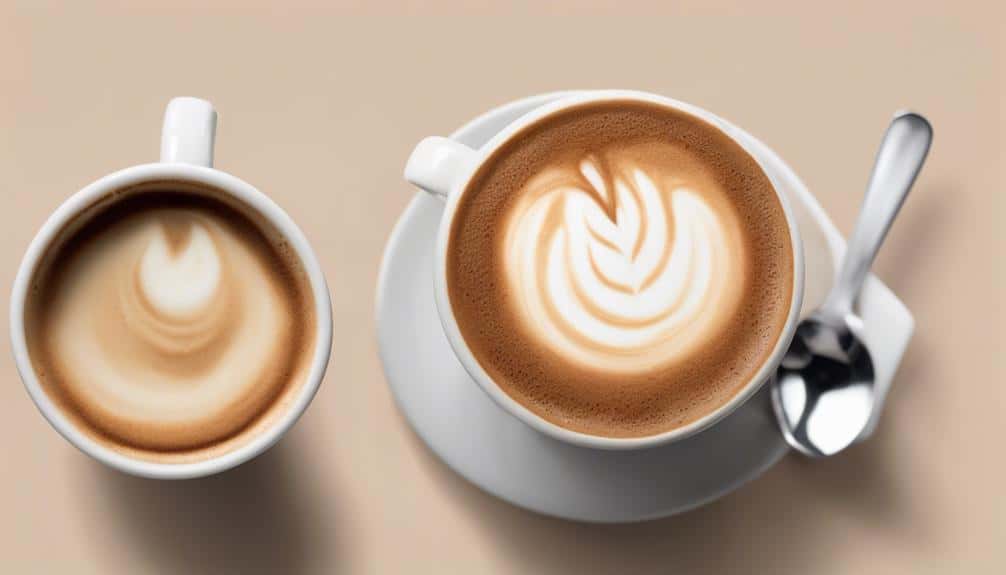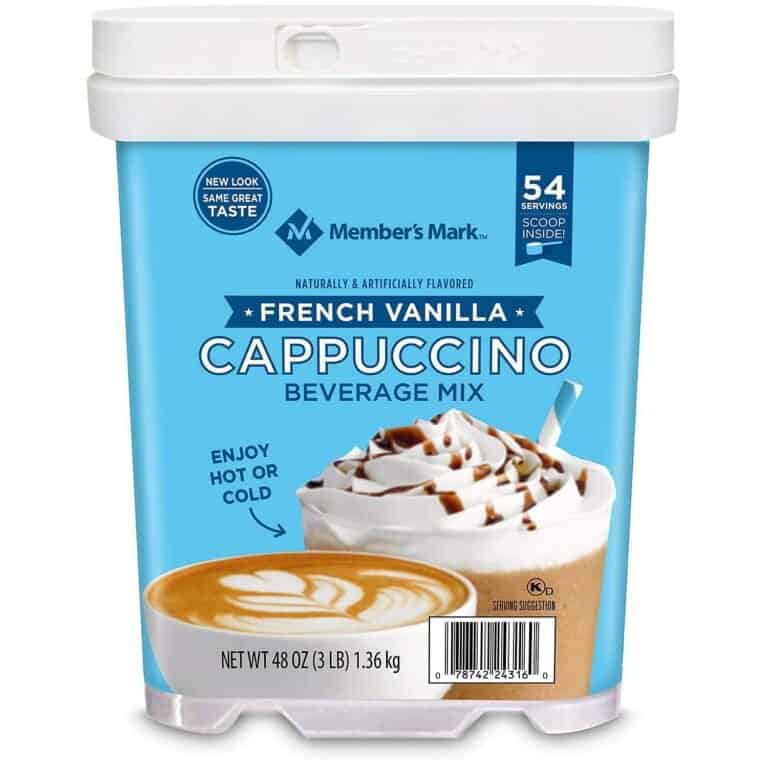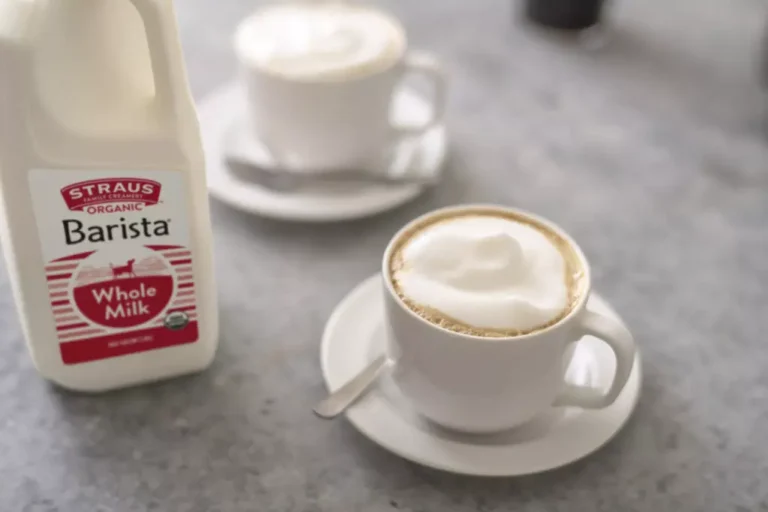Cappuccino Vs Cafe Au Lait: 10 Key Differences You Need to Know Before Ordering Your Next Coffee

When it comes to choosing between a cappuccino and a café au lait, the differences go beyond just the foam. Understanding these nuances can elevate your coffee experience to a whole new level.
From the milk-to-coffee ratio to the cultural significance, each aspect plays a role in shaping the final cup.
So, grab your favorite mug and let's explore the intricacies that make these two beverages unique.
Milk-to-Coffee Ratio
When considering the milk-to-coffee ratio in various coffee beverages like Café au Lait, Cappuccino, and Latte, the balance of ingredients plays a crucial role in defining their distinct flavors and textures.
Café au Lait, with its 1:1 ratio of brewed coffee to warmed milk, achieves a harmonious blend where the milk mellows the coffee's intensity, resulting in a creamy and mild taste.
In contrast, Cappuccino strikes a balance with equal parts espresso, steamed milk, and foam, creating a rich and velvety texture that complements the bold coffee flavor.
The Latte, featuring a 2:1 milk-to-coffee ratio, offers a smooth and mellow espresso experience, as the steamed milk enhances the drink's creaminess without overpowering the coffee.
Understanding these ratios is essential for coffee enthusiasts seeking their preferred flavor profiles, whether they crave the gentle blend of a Café au Lait, the creamy richness of a Cappuccino, or the smooth subtlety of a Latte.
Foaming Technique
In cappuccino preparation, we prioritize creating a dry foam by incorporating a higher amount of air during the milk-steaming process. This technique leads to the formation of numerous tiny air bubbles within the milk, resulting in a frothy consistency that gives the cappuccino its signature velvety texture. The goal is to achieve a thick foam that not only enhances the visual appeal of the drink but also contributes to its traditional presentation.
On the other hand, café au lait typically skips the foaming process, focusing instead on combining coffee and warm milk to create a smooth, creamy texture without the distinct layers of foam found in cappuccinos. While cappuccinos boast a rich and luxurious foam, café au lait offers a simpler, more straightforward coffee experience that emphasizes the harmonious blend of coffee and milk flavors without the frothy embellishments.
Espresso Content

Transitioning from the discussion on foaming technique, our focus now shifts to the espresso content in both cappuccinos and café au lait, highlighting key distinctions in coffee-to-espresso ratios and caffeine levels.
Cappuccinos are typically composed of one shot of espresso, providing a concentrated caffeine boost with around 75 mg per serving. This espresso base contributes to a robust and bold flavor profile, resulting in a rich and intense coffee experience.
In contrast, Café au Lait boasts a higher coffee to milk ratio and is made with brewed coffee instead of espresso. As a result, Café au Lait offers a smoother coffee taste with a milder caffeine content compared to cappuccinos.
The choice between these two beverages ultimately comes down to your preference for flavor intensity and caffeine levels, with cappuccinos delivering a stronger kick from the espresso content, while Café au Lait provides a more balanced and subtle coffee experience.
Serving Vessel Differences
The choice of serving vessels for cappuccinos and Café Au Lait plays a significant role in enhancing the overall drinking experience. Cappuccinos, traditionally served in smaller cups or mugs, are designed to maintain the perfect balance of espresso, steamed milk, and foam layers. The compact size of cappuccino cups not only helps in preserving this delicate ratio but also showcases the visually appealing layers of the drink.
On the other hand, Café Au Lait is typically served in larger bowls or cups to accommodate a balanced mix of brewed coffee and warm milk without compromising on quantity. The larger serving vessel of Café Au Lait allows for a more generous portion while still maintaining the harmonious blend of coffee and milk.
These distinct choices in serving vessels for cappuccinos and Café Au Lait not only contribute to the presentation of the drinks but also reflect the cultural and traditional preferences associated with each beverage.
Flavor Profiles

Analyzing the flavor profiles of Café au Lait and Cappuccino reveals distinct characteristics that cater to different taste preferences and textures. Café au Lait offers a mild, creamy flavor with a smooth texture, achieved through a 1:1 ratio of brewed coffee to warmed milk. In contrast, Cappuccino presents a bold, slightly sweet taste with a velvety, creamy texture, combining equal parts espresso, steamed milk, and foam.
Café au Lait focuses on blending strong coffee with warm, creamy milk, creating a straightforward profile. On the other hand, Cappuccino emphasizes a layered taste, with a stronger coffee flavor and airy milk foam, providing a more complex experience. Traditionally, Café au Lait is served without foam, while Cappuccino boasts a thick layer of foam on top, enhancing its luxurious mouthfeel.
The smoother and creamier profile of Café au Lait contrasts with the bolder and more layered taste of Cappuccino, catering to different preferences for coffee flavors and textures.
Origin Stories
Exploring the roots of Cappuccino and Café au Lait uncovers rich historical narratives that shed light on their distinct cultural influences and flavor profiles. Cappuccino, originating in Italy, is believed to be named after the Capuchin monks due to the similar color of their robes to the drink's hue when espresso, steamed milk, and foam combine. On the other hand, Café au Lait, a favorite in French cafes worldwide, consists of equal parts brewed coffee and warmed milk, offering a smoother and creamier taste.
Let's delve into a comparison of the origin stories of Cappuccino and Café au Lait through the table below:
| Aspect | Cappuccino | Café au Lait |
|---|---|---|
| Country of Origin | Italy | France |
| Key Ingredients | Espresso, Steamed Milk, Foam | Brewed Coffee, Steamed Milk |
| Ratio | 1 part Espresso : 1 part Steamed Milk : 1 part Foam | 1 part Brewed Coffee : 1 part Steamed Milk |
Understanding these beginnings can deepen our understanding and appreciation for the cultural nuances and flavors of these beloved coffee beverages.
Temperature Variances

When comparing Café au Lait and Cappuccinos, the serving temperatures play a crucial role in defining the taste profiles. The warmth of the Café au Lait enhances the creamy texture, while the hotter temperature of Cappuccinos ensures a bold coffee flavor.
Understanding these temperature variances is key to appreciating the distinct coffee experiences each beverage offers.
Serving Temperature Differences
In understanding the nuances of cappuccinos and café au lait, it's crucial to consider the significant difference in serving temperatures between these two popular coffee beverages. When it comes to temperature variances:
- Cappuccinos are typically served hot, ranging from 150-160°F, allowing the layers of espresso, milk, and foam to be distinct and enjoyable.
- Café au Lait is served at a warmer temperature, around 160-170°F, to maintain a balance between the brewed coffee and warmed milk.
- The difference in serving temperature plays a vital role in shaping the overall taste and experience of each drink, making it essential for coffee enthusiasts to be aware of these distinctions.
Impact on Taste
The temperature variances between cappuccinos and café au lait significantly influence the taste profiles of these popular coffee beverages, defining their distinct flavor experiences.
Cappuccinos, served hot, intensify the bold coffee flavor through higher temperatures of both espresso and milk. This heat enhances the richness and depth of the coffee taste, complemented by the frothy texture from steamed milk.
In contrast, café au lait, served warm, blends coffee and milk at a lower temperature, resulting in a milder, creamier taste. The balanced warmth of café au lait provides a smoother flavor profile, emphasizing the subtle nuances of the coffee without overpowering it.
These temperature differences play a crucial role in shaping the overall taste and texture of cappuccinos and café au lait, catering to varied preferences in coffee enjoyment.
Milk Frothing Techniques
Temperature variances play a crucial role in distinguishing the milk frothing techniques between cappuccinos and café au lait, influencing their respective textures and flavors. When it comes to milk frothing:
- Steaming Milk for Cappuccinos:
- The milk for cappuccinos is steamed at a hotter temperature to produce a dense and creamy foam.
- Heating Milk for Café au Lait:
- Cafe au lait uses hot milk without frothing, resulting in a smoother consistency compared to cappuccinos.
- Temperature Differences:
- Cappuccinos aim for a temperature range of 150°F to 160°F to achieve velvety foam, while cafe au lait is heated to around 140°F for a warm, creamy consistency without the airy foam.
Caffeine Levels

When comparing the caffeine levels between cappuccinos and Café au Lait, it becomes evident that cappuccinos generally pack a stronger punch due to their higher espresso content. A typical 8 oz cappuccino contains around 80 mg of caffeine, while a Café au Lait of the same size may have approximately 50 mg. The espresso in cappuccinos contributes significantly to their higher caffeine levels, making them a bolder coffee choice. Café au Lait's lower caffeine content, on the other hand, is a result of its equal parts coffee and milk ratio, which dilutes the overall caffeine concentration.
| Coffee Type | Caffeine Level (per 8 oz) |
|---|---|
| Cappuccino | 80 mg |
| Café au Lait | 50 mg |
While caffeine levels can vary depending on the size and specific recipe of each drink, cappuccinos consistently offer a stronger caffeine kick compared to Café au Lait.
Cultural Significance
Comparing the cultural significance of cappuccino and Café au Lait reveals distinct traditions rooted in Italy and France, respectively, shaping the way these beverages are enjoyed worldwide.
- Italian Coffee Culture:
- Cappuccino holds a special place in Italian coffee culture, where it isn't just a drink but a morning ritual symbolizing a fresh start to the day.
- French Coffee Traditions:
- Café au Lait, on the other hand, reflects the French coffee traditions of savoring a comforting beverage that can be enjoyed throughout the day, often paired with breakfast or as a mid-afternoon pick-me-up.
- Global Influence:
- Both beverages have made their mark in the coffee industry globally, with cappuccino being associated with social gatherings and conversations in Italian cafes, while Café au Lait offers a sense of warmth and familiarity, blending French sophistication with American practicality.
Popular Variations

Exploring the diverse array of regional variations in both Café au Lait and Cappuccino reveals a rich tapestry of flavors and textures that cater to coffee enthusiasts worldwide. When it comes to popular variations, these two classic coffee drinks offer unique twists that add to their allure. Let's delve into some of the key variations:
| Café au Lait | Cappuccino |
|---|---|
| Often served with chicory, adding a unique flavor | Topped with cocoa powder or cinnamon for a hint of sweetness |
| Emphasizes the balance between coffee and warm milk | Features a bold espresso flavor with velvety foam |
| Known for its milder, creamy texture | Offers a bolder taste profile |
| Simple yet satisfying flavor profile | Delivers a slightly sweet taste |
| Enjoyed for its classic French roots | Popular for its Italian heritage |
These variations showcase how each drink can be customized to suit different preferences while still retaining the essence of Café au Lait and Cappuccino.
Conclusion
In conclusion, understanding the key differences between Cappuccino and Café Au Lait is essential for making informed choices when ordering your next coffee.
From the milk-to-coffee ratio and foaming technique to flavor profiles and cultural significance, each beverage offers a unique experience for coffee enthusiasts.
By being aware of these distinctions, you can confidently select the drink that best suits your taste preferences and enjoy a delicious cup of coffee tailored to your liking.





